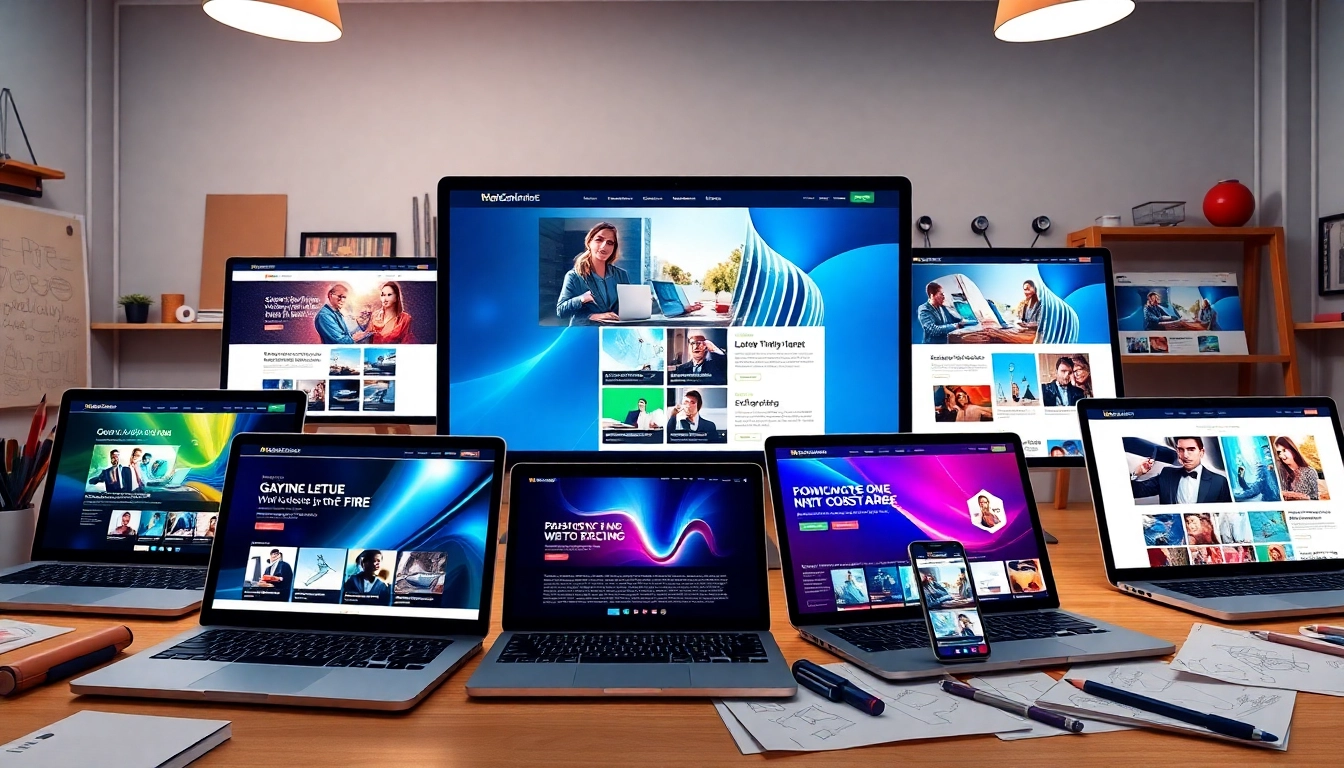Understanding Icons in Digital Design
The Definition and Importance of Icons
Icons are graphical representations of concepts or functions that serve as visual cues in user interfaces. They communicate ideas efficiently and improve the user experience by making navigation intuitive. In an age where digital and mobile communication grows ever more prevalent, the significance of well-designed icons has never been more pronounced. When users engage with interfaces equipped with meaningful icons, they are empowered to complete tasks more efficiently. Icons help create a visual language that transcends words and caters to a diverse audience, making them essential in information architecture and digital design.
History of Icons in User Interfaces
The history of icons in digital design can be traced back to early operating systems, where images were used to represent files, applications, and actions. The introduction of the graphical user interface (GUI) in the 1980s marked a significant turning point; icons emerged as a revolutionary way to enhance user interaction. Apple’s Macintosh popularized the desktop metaphor, where folders, documents, and applications were depicted through visually distinct icons.
As technology progressed, the design of these icons evolved dramatically. The need for clearer, more effective communication in digital spaces led to the emergence of minimalist iconography, emphasizing simplicity and scalability. In the 2000s, the mobile era introduced its own challenges and opportunities, urging designers to create icons that were not just functional but visually engaging across various screen sizes.
Trends Shaping Icon Design Today
Today, icon design is influenced by multiple factors, including minimalism, flat design, and adaptability for multiple devices. Here are some prominent trends:
- Flat and Minimalist Design: This approach reduces visual clutter and enhances usability, focusing on simplicity that allows users to focus on content.
- Responsive Icons: As device variety increases, responsive design ensures that icons adjust seamlessly to different screen sizes while maintaining clarity.
- Microinteractions: Small animations can make icons feel more dynamic and engaging, providing feedback that enhances the user experience.
- Custom Icon Sets: Many brands now opt for customized icons that align with their aesthetic and messaging, aiding brand recognition while establishing a unique visual identity.
Types of Icons and Their Usage
Common Icons and Their Applications
Icons can be categorized based on their functions and contexts. Here are common types and their applications:
- Action Icons: These indicate a user action, such as ‘delete,’ ‘edit,’ or ‘download.’ They are crucial in guiding user interaction.
- Navigation Icons: Present in menus or toolbars, navigation icons help users move through an interface efficiently, such as ‘home,’ ‘back,’ or ‘forward.’
- Social Media Icons: These connect users to social platforms, enhancing brand presence and user engagement.
- File Type Icons: Often used in file explorers, these differentiate file types—like documents, images, or applications—by visual representation.
Custom Icons vs. Standard Icons
Deciding between custom and standard icons can influence a project’s success. Standard icons offer immediate recognition as they follow established conventions. For example, the ‘home’ icon (a simple house shape) is universally understood. However, they may lack uniqueness.
In contrast, custom icons can convey brand personality and coherence within a specific design language. Custom designs can better address the specific needs of a user interface, making it easier for the audience to identify functions unique to the brand. The choice should be based on project requirements, audience expectations, and branding approach.
Choosing the Right Icons for Your Project
Selecting the right icons involves identifying your audience, understanding the context, and ensuring clarity and relevance. Consider the following steps:
- Identify the Audience: Understand demographics and preferences to select icons that resonate with your users.
- Context Matters: Different contexts demand varying designs; think about where the icons will be used, such as web applications, mobile apps, or print media.
- Maintain Consistency: Ensure that styles, weights, and sizes are uniform across your icon set to foster a cohesive interface.
Best Practices for Icon Design
Design Principles for Effective Icons
To create impactful icons, adhere to these design principles:
- Simplicity: Aim for clarity with minimal detail, avoiding complexities that may confuse users.
- Scalability: Design icons so they remain clear and recognizable across different sizes; they could be displayed from small mobile screens to large desktops.
- Intuitive Design: Icons should symbolize their functions or associated actions naturally, avoiding ambiguity.
- Color and Contrast: Use color strategically to enhance visibility and communicate meaning. Ensure that there’s sufficient contrast against backgrounds.
Accessibility Considerations in Icon Design
Designing with accessibility in mind is essential to ensure that all users can interact with your icons effectively. Here are key considerations:
- Text Alternatives: Provide descriptive labels for icons in terms of functionality; screen readers should be able to relay this information.
- Visual Contrast: Ensure a contrast ratio that meets accessibility standards, allowing users with visual impairments to perceive icons easily.
- Interactive Feedback: When an icon is tapped or hovered upon, provide clear feedback through color changes or animations.
Testing Your Icons with Users
Conducting tests with actual users helps determine how well your icons function. Procedures might include:
- User Surveys and Interviews: Gather direct feedback from users regarding which icons resonate and whether they convey the intended meanings.
- A/B Testing: Compare different icon designs to see which performs better based on user interaction and comprehension.
- Observational Studies: Watch users as they navigate interfaces using your icons to identify any confusion or hesitance in interactions.
Tools and Resources for Icon Creation
Popular Icon Design Software
There are various software solutions available to assist designers in creating and manipulating icons. Popular choices include:
- Adobe Illustrator: Industry-standard vector graphics software ideal for professional icon design.
- Figma: Cloud-based design tool that promotes collaboration for icon developers working in teams.
- Sketch: A widely used tool for creating UI/UX designs, including icons, with a strong focus on vector graphics.
Free Platforms to Source Icons
For those on budget constraints or looking to expedite the design process, several free platforms offer a range of icons:
- Flaticon: Hosts an extensive database of vector icons available in various formats.
- Icons8: Provides free icons for diverse applications, including social media and design projects.
- The Noun Project: Features a vast collection of high-quality icons contributed by designers around the globe.
Working with Designers for Custom Icons
If opting for custom icons, collaborating with skilled designers can yield the best results. Steps for successful collaboration include:
- Define Objectives: Clearly explain the purpose of the icons and the desired outcomes for the project.
- Share Inspiration: Provide examples of icons that resonate with your vision, helping designers align with your expectations.
- Maintain Open Communication: Regular check-ins during the design process can prevent misalignment and ensure quality outcomes.
Evaluating Icon Performance
Key Metrics for Icons in UX/UI
The performance of icons in user experiences can be measured through various metrics, including:
- Click-Through Rate (CTR): How often a user interacts with an icon can signal its effectiveness in prompting action.
- Task Completion Time: Measure how long it takes users to complete tasks using icons to determine efficiency.
- Error Rate: Analyze the frequency of incorrect actions stemming from icon usage to gauge clarity and understanding.
Using A/B Testing with Icons
A/B testing allows designers to compare two variations of icons to understand user preferences. Steps in conducting effective A/B testing include:
- Identify Variables: Determine which aspect of the icon (color, size, design) will be tested.
- Segment Users: Divide users into two groups, ensuring that each group has a similar demographic makeup.
- Analyze Results: Collect data on user interactions with each icon variation to assess which performs better based on established metrics.
Iterating on Icons Based on User Feedback
Incorporating user feedback into your icon design process is crucial for refining the effectiveness of icons. Consider next steps:
- Regular Review Sessions: Schedule times to assess how users engage with the icons and whether additional iterations are needed.
- Implementation of Suggestions: Use constructive feedback to make incremental improvements that align with user needs.
- Continuous Learning: Stay updated on icon trends and user behaviors to adapt designs accordingly in future projects.


